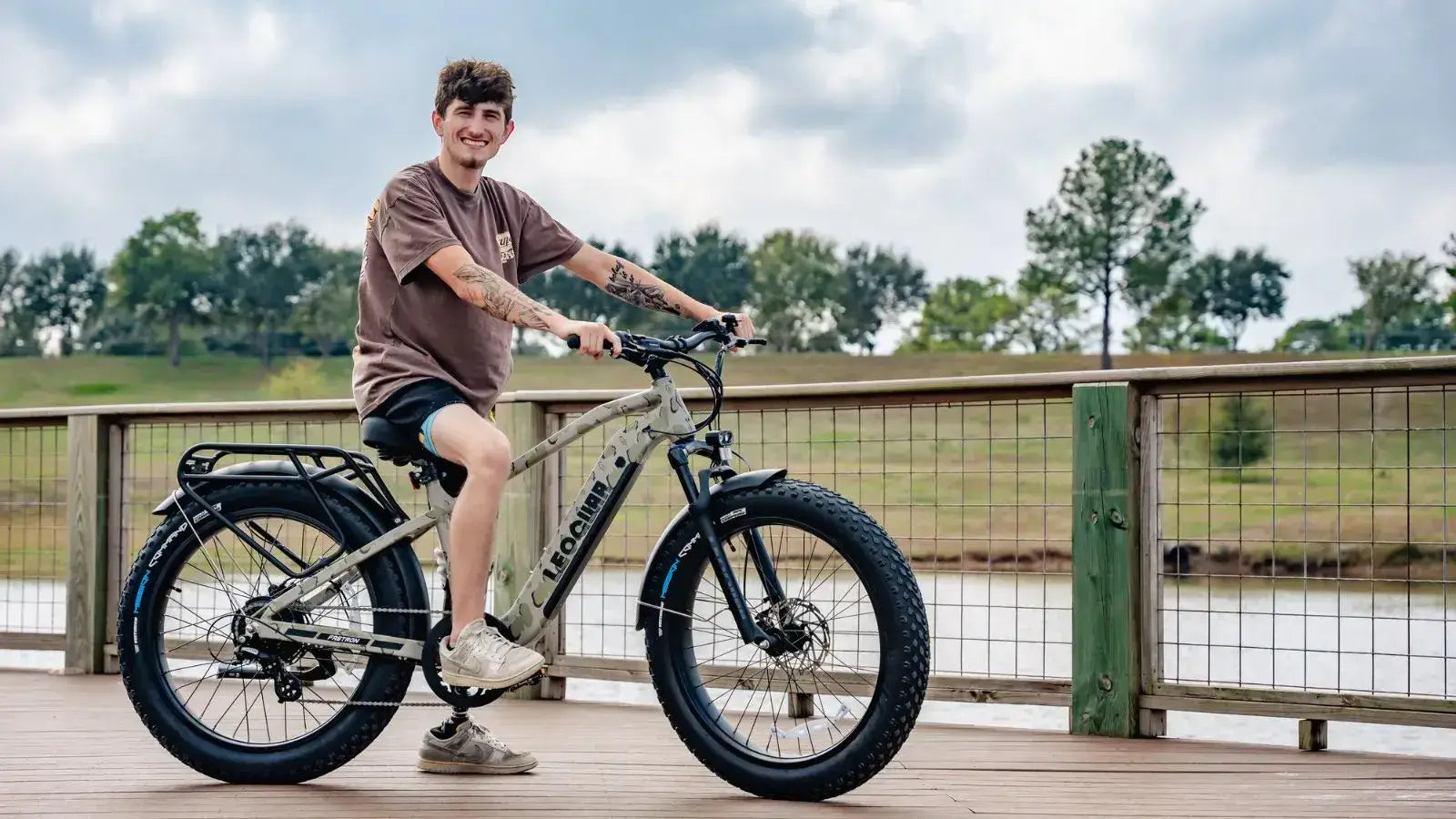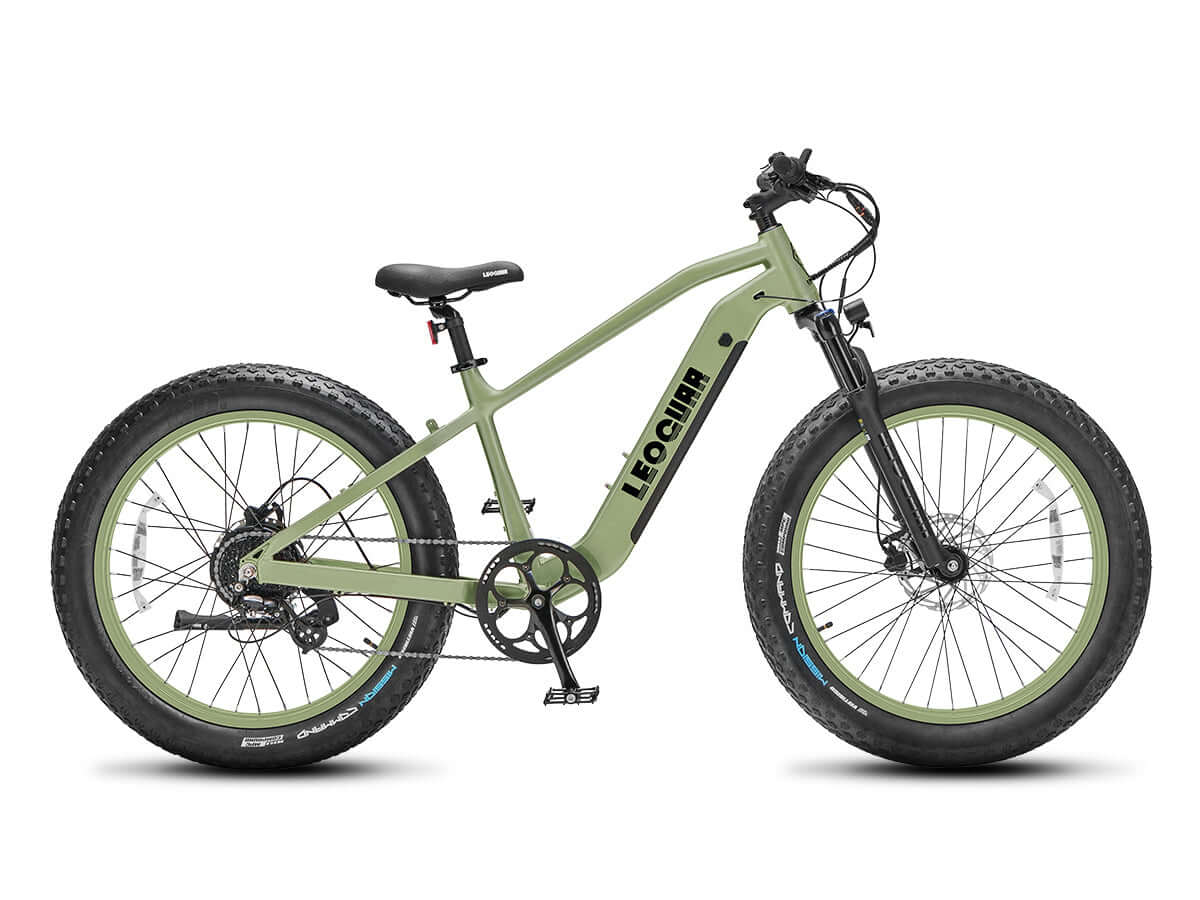
Youth E Bike Guide: Perfect Electric Bicycles for Young Riders
A New Age of Biking
Electric bikes are now common on our streets and trails. As this happens, many parents ask: "Is a youth e-bike a good idea for my child?" We understand why you might hesitate. However, the answer is yes, as long as you pick the right bike. A youth electric bicycle isn't just a smaller adult model. It's a special machine built to open up cycling for young riders. These bikes help build confidence, make family trips longer and more fun, and get kids active outdoors. They make hills and long paths easier, turning frustration into joy and adventure. A youth e bike is the next step forward in cycling. It makes riding more fun for the whole family.
What Makes a Youth E-Bike?
To ease your worries, you need to know that a youth e-bike is very different from an adult one. Companies design these bikes with safety and ease of use for smaller riders as top goals. The differences aren't just how they look. They are built into the bike's core to give a controlled, confidence-building experience. These differences make a youth electric bicycle a good choice instead of just a smaller, overpowered machine.
Key Safety Differentiators
The design focuses on control and proper fit. Youth e-bikes have smaller, less powerful motors, usually under 250W, which give gentle help instead of sudden speed bursts. This power is controlled by speed-limited systems that often cap the helped speed at 12-15 mph.
The frame is sized for a child's body, making sure there's a low height to step over and a comfortable, upright riding position that gives them better control of the bike. They are also much lighter, making them easier for a young rider to handle, move in tight spaces, and pick up after a fall. Finally, the parts are kid-friendly, with brake levers that are easier to reach for smaller hands, narrower handlebars for better control, and simpler, easier-to-use displays and controls.
| Feature | Typical Youth E-Bike | Typical Adult E-Bike |
|---|---|---|
| Motor Power | 100W - 250W | 250W - 750W+ |
| Top Assisted Speed | 12-15 mph (20-25 km/h) | 20-28 mph (32-45 km/h) |
| Weight | Lighter (30-45 lbs) | Heavier (50-70+ lbs) |
| Frame Design | Scaled-down, low standover | Full-size, various geometries |
| Controls | Simple, intuitive interface | Often more complex displays |
Real-World Rider Benefits
A youth e-bike is much more than just a fun new toy. It's an investment in a child's growth. The benefits cover physical health, personal responsibility, and family connection, giving value that lasts long after the first excitement fades. By seeing the e-bike as a tool for growth, parents can understand how it helps shape a well-rounded, confident young person.
Boosting Physical Health
One of the best advantages is how a youth electric bicycle encourages ongoing physical activity. The pedal-help function changes everything. It takes the "burn" out of steep hills and the "drag" out of long distances, which are often the things that stop kids from riding. Instead of giving up, they can pedal longer and explore further, building heart health and stamina without feeling beaten. It keeps them doing healthy, active movement for hours.

Cultivating Independence
An e-bike can be a young person's first real taste of responsible freedom. We've seen how a youth electric bicycle can change the weekend. Instead of asking for a ride, a teen can now plan their own trip to the library, a friend's house, or sports practice. This simple act teaches valuable life skills: time management, route planning and navigation, and the responsibility of securing and caring for their own way to get around. It's a step toward self-reliance.
Strengthening Family Bonds
E-bikes are the great equalizers on family trips. No more waiting for the youngest rider to catch up or cutting a ride short because little legs are tired. A youth e-bike lets a child easily keep pace with their parents and older siblings, even on hard trails or over long distances. This turns a possibly frustrating experience into a truly shared adventure, creating positive memories and strengthening family bonds through a fun, group activity.
Improving Confidence
The mental boost a child gets from an e-bike is deep. Beating a hill they used to have to walk up or finishing a 10-mile loop they thought was impossible gives an incredible sense of achievement. This success builds toughness and a "can-do" attitude that carries to other areas of their life. Learning the bike and its systems gives them a real feeling of skill and control, which powerfully builds self-esteem.
A Parent's Safety Guide
Safety is, without question, the number one priority. A youth e-bike is a powerful tool, and like any tool, it needs proper training and respect. We've made a simple, three-step plan to help you prepare your child for their first ride and beyond. This isn't just a list; it's a process for building a safe and responsible rider.
Step 1: The Essential Gear
Before the wheels even turn, proper gear is required.
- The Right Helmet: This is the most important piece of safety equipment. Look for a helmet with MIPS (Multi-directional Impact Protection System) technology, which adds protection against spinning forces during a crash. Make sure it fits properly: the helmet should be snug, level on the head, and the straps should form a 'V' around the ears. As data from the IIHS shows, helmets are critical for cyclist safety and are proven to greatly reduce the risk of head injury.
- Visibility: A rider who can be seen is a safer rider. Give your child bright clothing, especially for rides at dawn, dusk, or on cloudy days. Make sure the bike has front and rear lights and that they are used. Reflectors on the bike and clothing add another layer of protection.
Step 2: The 'Parking Lot' Drill
Before hitting the road or trail, we always recommend a 'parking lot drill' in a large, empty, and safe area like a vacant school parking lot on a weekend.
- Feeling the Assist: Have your child start with the assist turned off to get a feel for the bike. Then, have them ride in the lowest assist setting, pedaling slowly to feel when the motor starts. This helps them understand how the power is delivered and avoid being surprised by it.
- Braking Practice: E-bikes are heavier and carry more momentum than standard bikes. Teach your child to brake smoothly and evenly with both brakes. Practice coming to a controlled, complete stop from various speeds. Stress braking before a turn, not during it, to keep traction and control.
- Low-Speed Moving: Set up small cones (water bottles work well) and have them practice weaving slow, tight turns. This builds important balance and bike handling skills that are essential for navigating real-world obstacles.
Step 3: Rules of the Road
An e-bike is a vehicle. Your child needs to understand and respect the laws of traffic.
- Review the Basics: Go over essential traffic laws together. This includes riding on the right side of the road with traffic, stopping completely at stop signs, and yielding to pedestrians.
- Learn Hand Signals: Practice the proper hand signals for turning left, turning right, and stopping. Make sure they can perform them confidently without losing control of the bike. A great resource for this conversation is the framework provided by the League of American Bicyclists, which promotes education as a key part of safety. You can learn more about their approach to creating safer streets through The 5 E's of bike safety.
Youth E-Bike Buying Checklist
Finding the right youth e-bike in the market can feel overwhelming. To make the process simpler, we've created a parent's checklist. Use these points to judge potential bikes and ask the right questions, making sure you choose a model that is safe, suitable, and enjoyable for your child.
1. Rider Fit and Frame Size
What to look for: The most important factor is a bike that fits your child now, not one they will “grow into.” They should be able to stand over the top tube with both feet flat on the ground. When seated, they should be able to reach the handlebars with a slight bend in their elbows and touch the ground with their tiptoes.
Why it matters: Proper fit is the foundation of control and confidence. A bike that is too large is difficult to handle, hard to stop, and scary for a young rider, making it unsafe.
2. Motor Power and Speed Limits
What to look for: A youth electric bicycle should have a motor of 250W or less. The top assisted speed should be limited to a reasonable level, ideally between 12–15 mph (20–25 km/h). Some models offer parent-adjustable speed limits via an app.
Why it matters: These limits are key safety guards, ensuring the power assist is manageable and preventing young riders from reaching speeds beyond their handling abilities.
3. Battery Quality and Range
What to look for: Choose batteries and charging systems that are UL or CE certified. For range, 15–25 miles is typically more than enough for youth riding, keeping the battery smaller and lighter.
Why it matters: Certified batteries provide peace of mind. A realistic range prevents overpaying for a large, heavy battery your child doesn’t need.
4. Brake Type and Performance
What to look for: Disc brakes are a must for the added weight and speed of an e-bike. Mechanical disc brakes are effective and easier to maintain, while hydraulic disc brakes offer superior stopping power. Make sure the brake levers are designed for small hands.
Why it matters: Reliable stopping power is crucial. Brakes that are easy for a child to use help prevent accidents and build confidence.
5. Bike Weight and Handling
What to look for: Compare the total weight of the bikes. A youth e-bike under 45 lbs (20 kg) is a good target.
Why it matters: A lighter bike is easier for a child to pedal, maneuver around obstacles, and lift if it falls. This builds independence and reduces frustration.
6. Build Quality and Brand Reputation
What to look for: Choose a bike from a reputable brand with better quality control, warranties, and customer support. Read reviews from other parents.
Why it matters: A well-built bike is safer, more reliable, and lasts longer. Strong customer support ensures you can resolve issues or find replacement parts easily.
Frequently Asked Questions
What age is appropriate for a youth e-bike?
Most youth e-bikes are designed for children ages 8-16, but the right age depends more on your child's size, maturity, and riding skills than their exact age. Your child should be able to ride a regular bike confidently before moving to an e-bike.
Do youth e-bikes require special licenses or registration?
In most areas, youth e-bikes with motors under 250W and speed limits under 20 mph don't require licenses or registration. However, laws vary by location, so check your local regulations before purchasing.
How long does the battery last on a youth e-bike?
Battery life depends on factors like terrain, rider weight, and assist level used. Most youth e-bikes provide 15-25 miles of range, which is typically enough for several hours of riding or multiple shorter trips.
Are youth e-bikes safe in wet weather?
While most youth e-bikes are water-resistant, it's best to avoid riding in heavy rain or through deep puddles. Wet conditions reduce tire grip and braking performance, making rides more dangerous for young riders.
How much should I expect to spend on a quality youth e-bike?
Quality youth e-bikes typically range from $800 to $2,500. While cheaper options exist, investing in a reputable brand with proper safety features and good customer support is worth the extra cost for your child's safety and enjoyment.









































Leave a comment